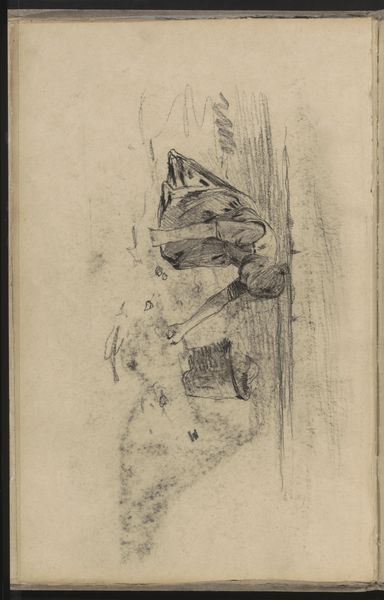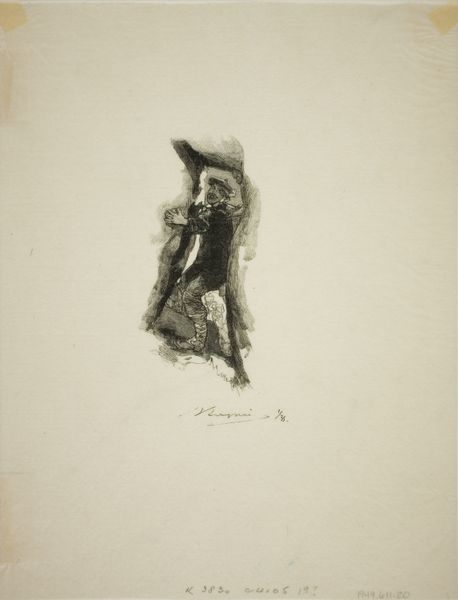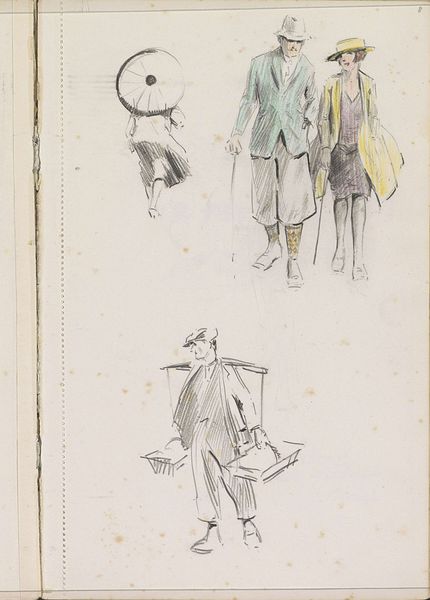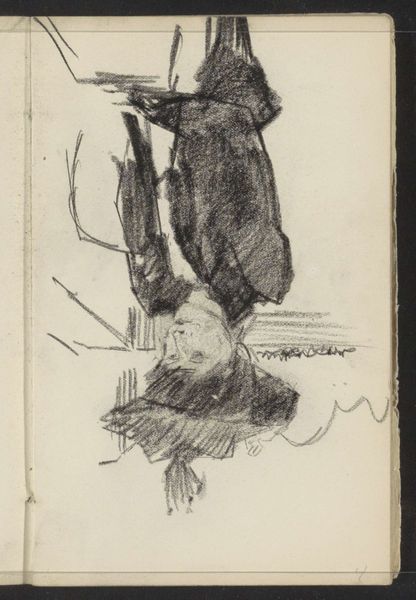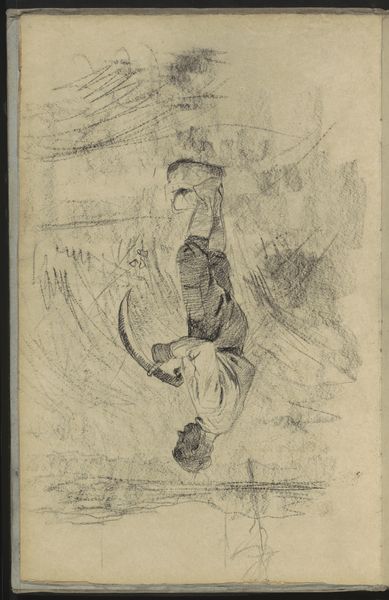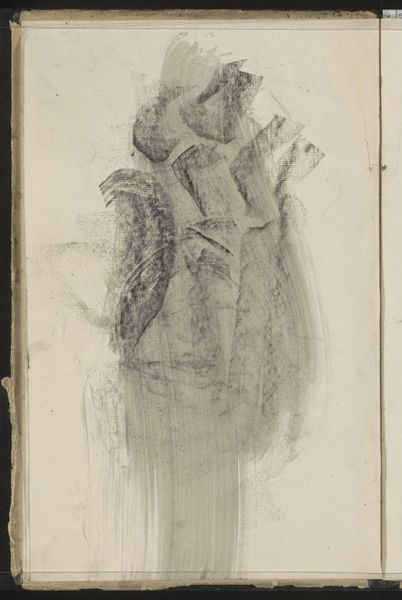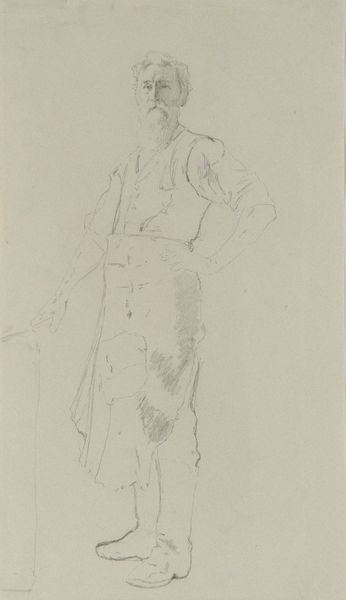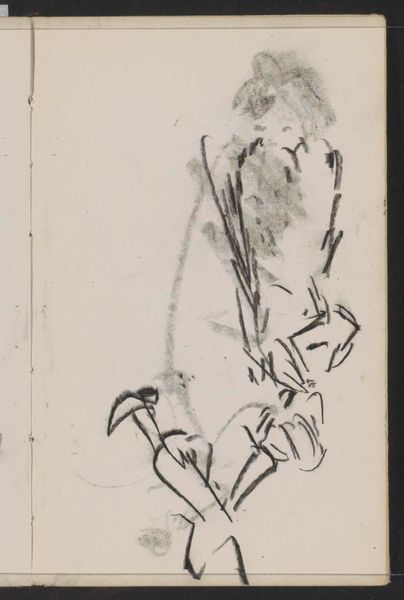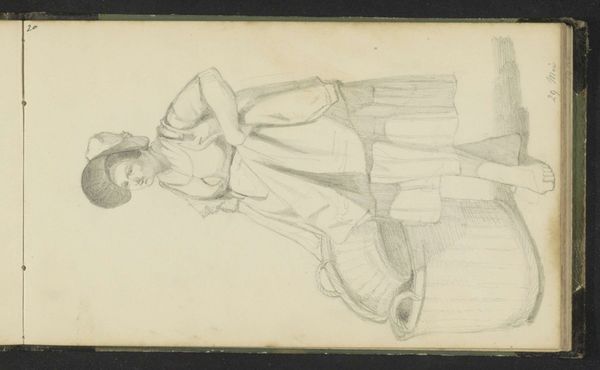
drawing, pencil
#
portrait
#
drawing
#
pencil sketch
#
figuration
#
geometric
#
pencil
Copyright: Rijks Museum: Open Domain
Editor: Here we have a pencil drawing, seemingly a quick study, by Otto Verhagen. It’s titled "Twee jongens die op hun buik op de grond liggen," which translates to "Two boys lying on their stomachs on the ground." Dating from around 1922-1925, the composition, although simple, exudes a casual intimacy. What strikes you about this piece? Curator: Well, considering the period between the wars, it's intriguing to see an artist focusing on such a domestic scene. Public art and discourse were highly politicized then; do you see this piece as a conscious retreat from that, or perhaps something more subtle? Editor: That’s a fascinating question. I hadn’t thought of it in terms of deliberate avoidance, more that it depicts an everyday innocence. How might this drawing function within the context of Verhagen’s other works and the art world at that time? Curator: Knowing Verhagen, and examining the socio-political conditions of the time, I am inclined to read the drawing as both intimate and potentially subversive. The natural, almost nonchalant portrayal of childhood contrasts with the often bombastic and ideological art promoted by various political factions. Was he presenting an alternative vision? Perhaps even subtly critiquing the dominant narratives through the presentation of genuine, unadorned human connection. Editor: I see what you mean. By simply depicting an intimate, quiet scene of childhood, he is perhaps making a statement about the importance of such moments, against a backdrop of political turmoil. Curator: Exactly. And in doing so, he invites us to reflect on what values are being prioritized – both in art and society at large. Art history can provide us with an enriching perspective if we place art in social and institutional contexts. Editor: Thanks. I hadn’t considered those layers. It's a really compelling interpretation that gives new depth to what initially appeared to be a simple drawing. Curator: And it's in those subtleties that art often speaks loudest. It’s been a rewarding reflection!
Comments
No comments
Be the first to comment and join the conversation on the ultimate creative platform.

